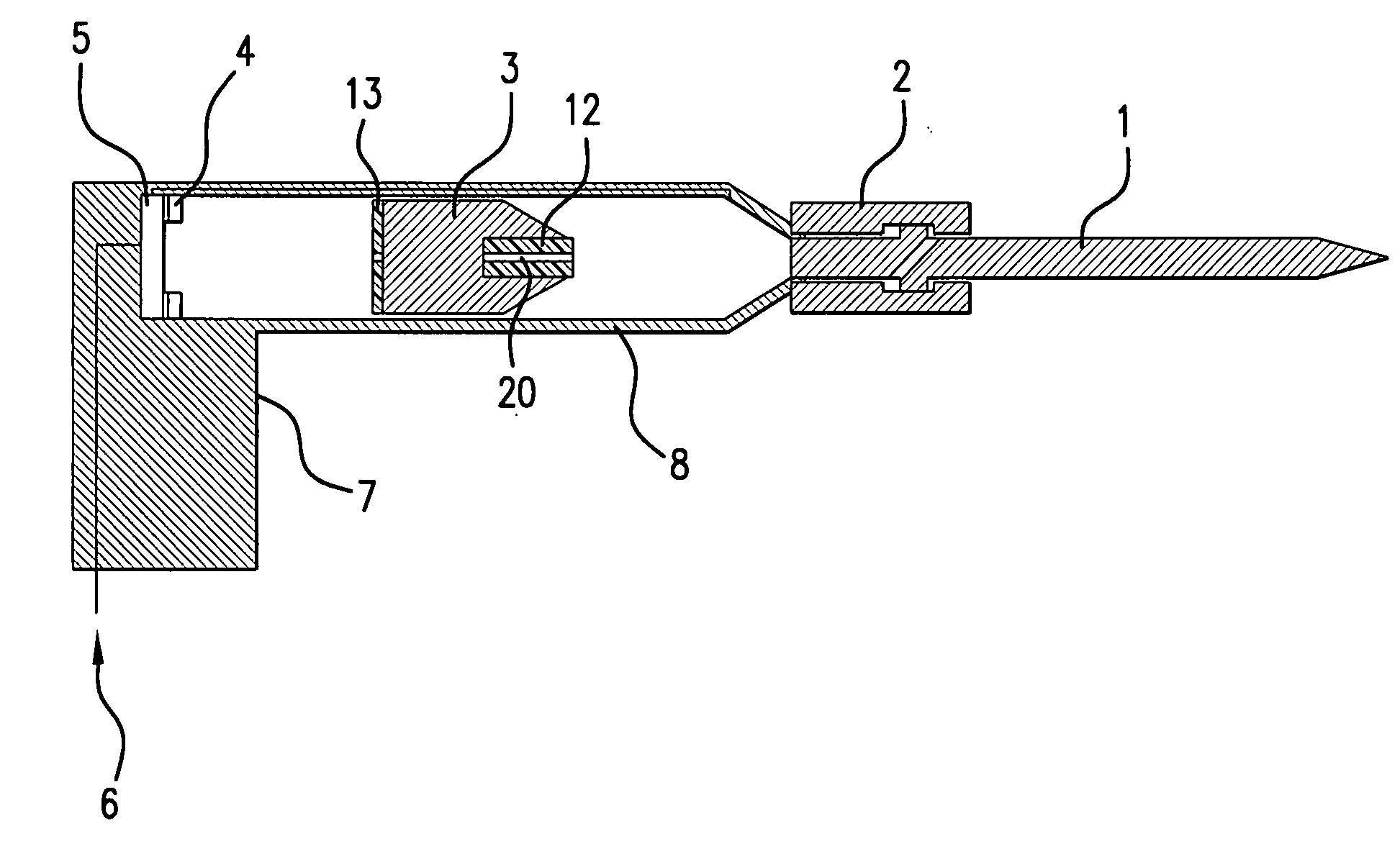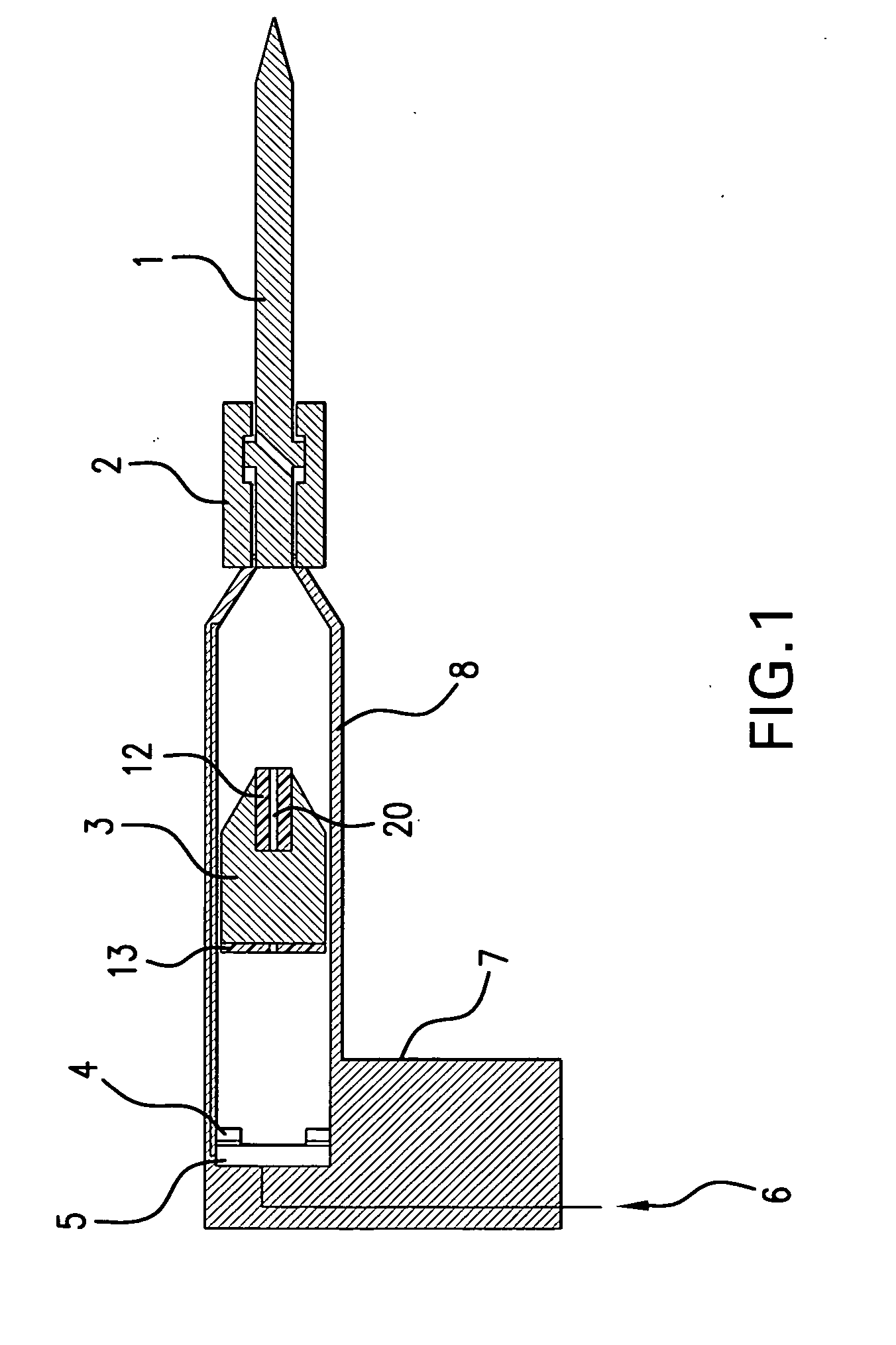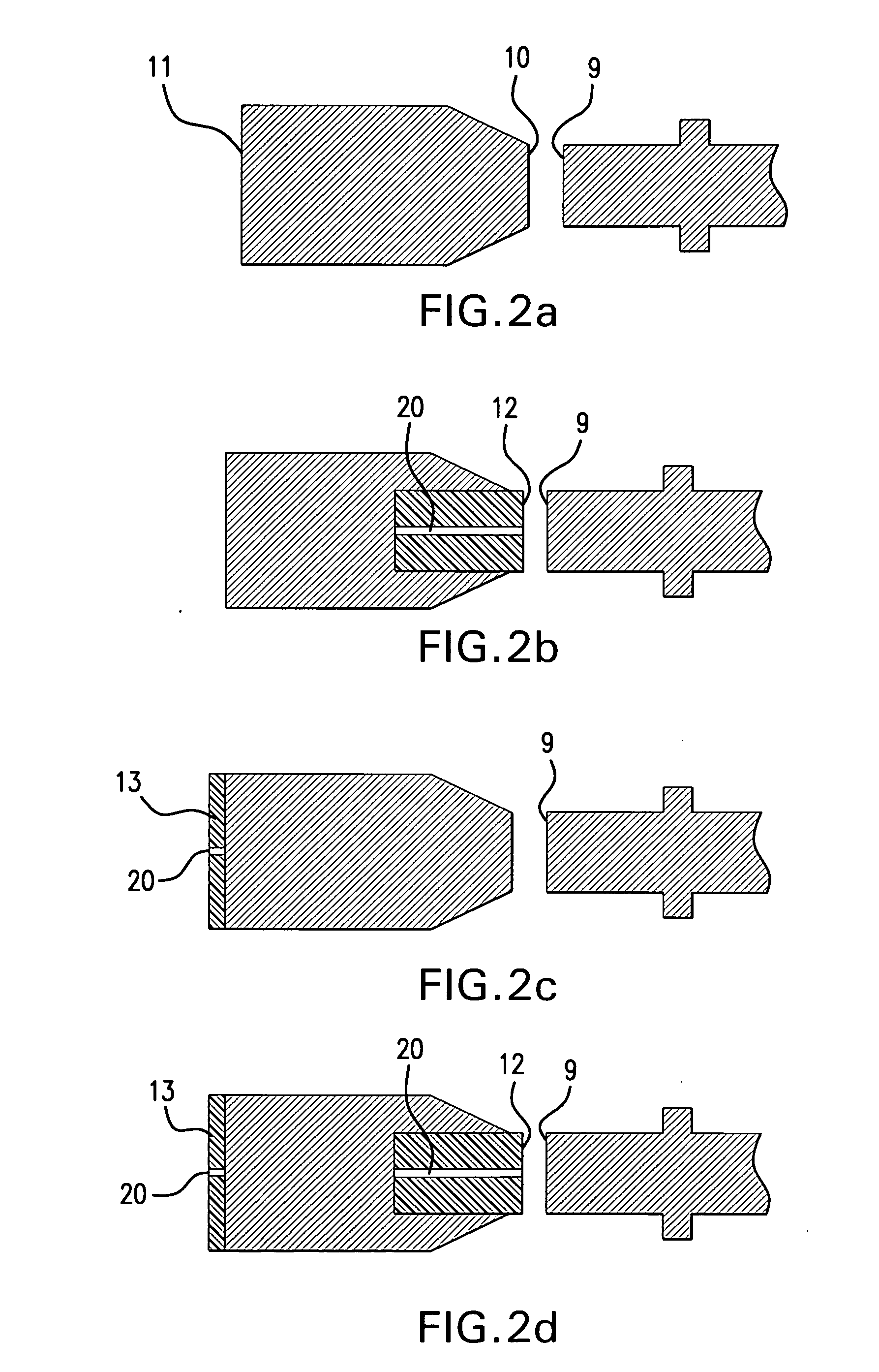Combination of Impact Tool And Shaped Relatively Lower Modulus Material
a technology of impact tools and materials, applied in the field of impact tools, can solve the problems of metal tools with spalling, mushrooming and chipping, and disks that are not particularly useful in oscillating, and achieve the effects of reducing noise and vibration, improving interchangeable tool bits used, and low modulus inclusion
- Summary
- Abstract
- Description
- Claims
- Application Information
AI Technical Summary
Benefits of technology
Problems solved by technology
Method used
Image
Examples
first example set
[0026]Table 1 shows an embodiment demonstrating the result an RLMI made of a simple high modulus polymeric material and the shape of the polymeric material. The first test, Test 1, utilized the simple placement of a flat cylindrical disk between the impacted end of a chisel and the impact end of a reciprocating piston. Test 2 utilized the placement of an RLMI made of high modulus polymeric material contained in a corresponding cylindrical cavity interior to the face of the impacting end of an oscillating or reciprocating piston which cylindrical impact end was slightly larger than the diameter of a chamfered tool. The impact of the piston was therefore transmitted from the impacting end of the piston (10) through the RLMI to the striking end of the tool (9) and thence to the working end of a chisel. In Test 3, the cutting tool chamfer on the impacted end was removed so that the diameter of the impacting and impacted surfaces match. (See FIG. 3). In all of the tests with the RLMI, th...
second example set
[0034]Table 2 shows the result of an embodiment of an RLMI made of a simple high modulus metal material of lower modulus than the adjacent metal without any modification of geometry, in this instance, using aluminum where the main tool material is steel. Two sets of tests were run with a conventional reciprocating piston and another with a hand-held tool.
[0035]Two tests were run on a test stand. The first configuration utilized the simple placement of a flat cylindrical disk between the impacted end of a chisel and the impact end of a conventional reciprocating piston. The second configuration utilized placement of an RLMI of lower modulus than the adjacent steel surfaces, namely aluminum, contained in a corresponding cylindrical cavity interior to the face of the impacting end of a reciprocating piston which cylinder was the diameter of a chamfered tool.
[0036]Two tests were run with a hand-held tool. As with the test stand, the first configuration utilized the simple placement of a...
third example set
[0044]Table 3 shows the result of an embodiment of a simple RLMI on the noise from a power tool. In this example, there were four configurations. Table 3 shows the results of an experiment in which an RLMI was added to a conventional power chisel on: the front, the back, and both sides of the piston.
[0045]More specifically, the first configuration was a control with no RLMI and the metal impacting end of an unmodified piston (16) hitting the impacted end of a cutting chisel. The second configuration was placement of a cylindrical insert of an RLMI in a cavity on the impacting end of the piston. The third configuration was placement of an RLMI cylindrical disk (15) on the back of the piston (11). The final and fourth configuration was placement of an RLMI cylindrical insert in a cavity on the impacting end of the piston and placement of an RLMI cylindrical disk on the back of the piston.
[0046]Test materials and test characteristics
[0047]Pneumatic chisel—Dayton Model 2Z486C Medium Air...
PUM
| Property | Measurement | Unit |
|---|---|---|
| Length | aaaaa | aaaaa |
| Length | aaaaa | aaaaa |
| Fraction | aaaaa | aaaaa |
Abstract
Description
Claims
Application Information
 Login to View More
Login to View More - R&D
- Intellectual Property
- Life Sciences
- Materials
- Tech Scout
- Unparalleled Data Quality
- Higher Quality Content
- 60% Fewer Hallucinations
Browse by: Latest US Patents, China's latest patents, Technical Efficacy Thesaurus, Application Domain, Technology Topic, Popular Technical Reports.
© 2025 PatSnap. All rights reserved.Legal|Privacy policy|Modern Slavery Act Transparency Statement|Sitemap|About US| Contact US: help@patsnap.com



